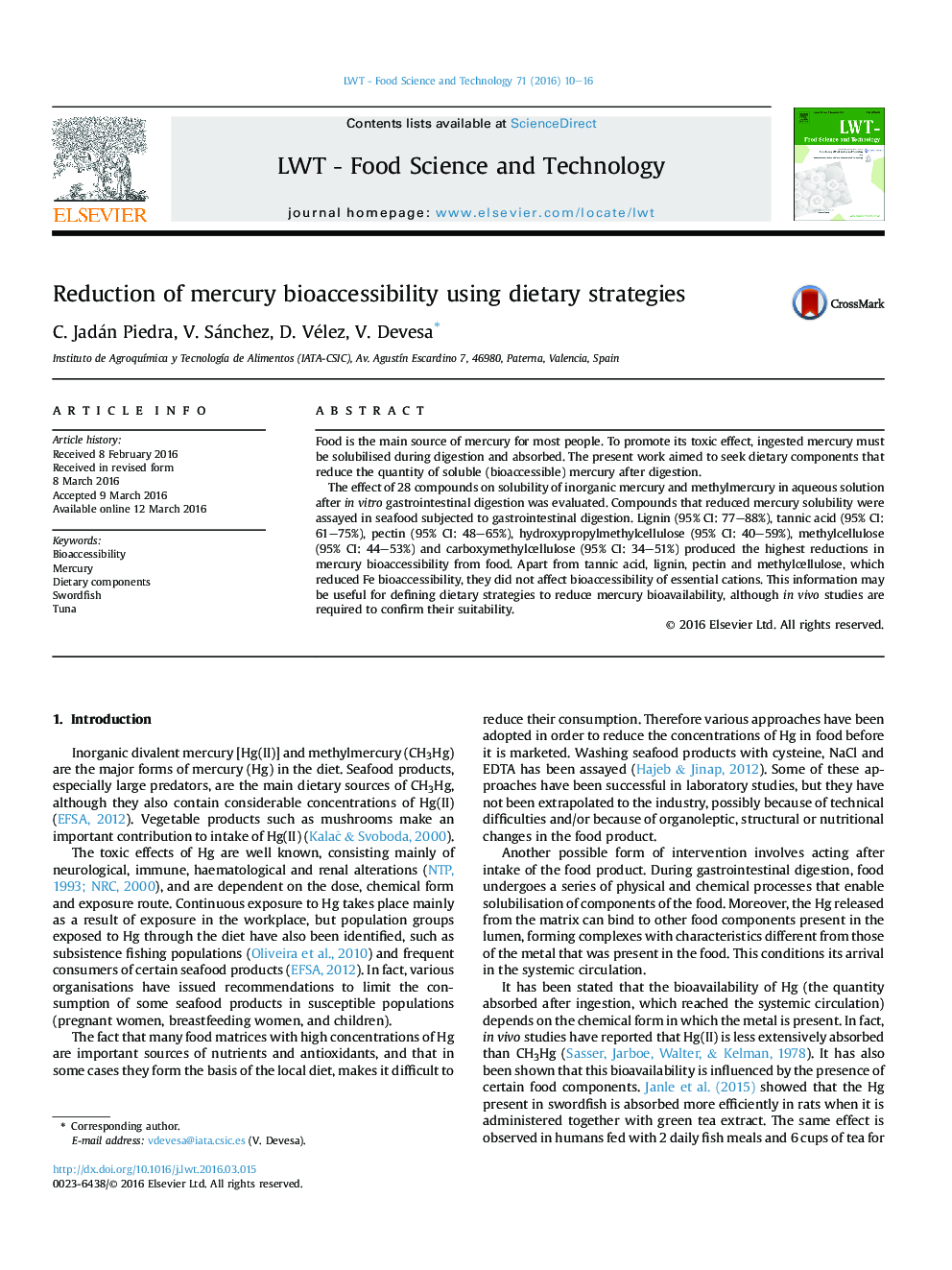| کد مقاله | کد نشریه | سال انتشار | مقاله انگلیسی | نسخه تمام متن |
|---|---|---|---|---|
| 4563504 | 1628526 | 2016 | 7 صفحه PDF | دانلود رایگان |
• Lignin, tannic acid and pectin reduce Hg bioaccessibility from swordfish and tuna.
• The use of cellulose derivatives is also effective in reducing Hg bioaccessibility.
• In general, the dietary compounds do not affect the bioaccessibility of essential cations.
• The use of these compounds could be a good strategy for reducing Hg bioavailability.
Food is the main source of mercury for most people. To promote its toxic effect, ingested mercury must be solubilised during digestion and absorbed. The present work aimed to seek dietary components that reduce the quantity of soluble (bioaccessible) mercury after digestion.The effect of 28 compounds on solubility of inorganic mercury and methylmercury in aqueous solution after in vitro gastrointestinal digestion was evaluated. Compounds that reduced mercury solubility were assayed in seafood subjected to gastrointestinal digestion. Lignin (95% CI: 77–88%), tannic acid (95% CI: 61–75%), pectin (95% CI: 48–65%), hydroxypropylmethylcellulose (95% CI: 40–59%), methylcellulose (95% CI: 44–53%) and carboxymethylcellulose (95% CI: 34–51%) produced the highest reductions in mercury bioaccessibility from food. Apart from tannic acid, lignin, pectin and methylcellulose, which reduced Fe bioaccessibility, they did not affect bioaccessibility of essential cations. This information may be useful for defining dietary strategies to reduce mercury bioavailability, although in vivo studies are required to confirm their suitability.
Journal: LWT - Food Science and Technology - Volume 71, September 2016, Pages 10–16
